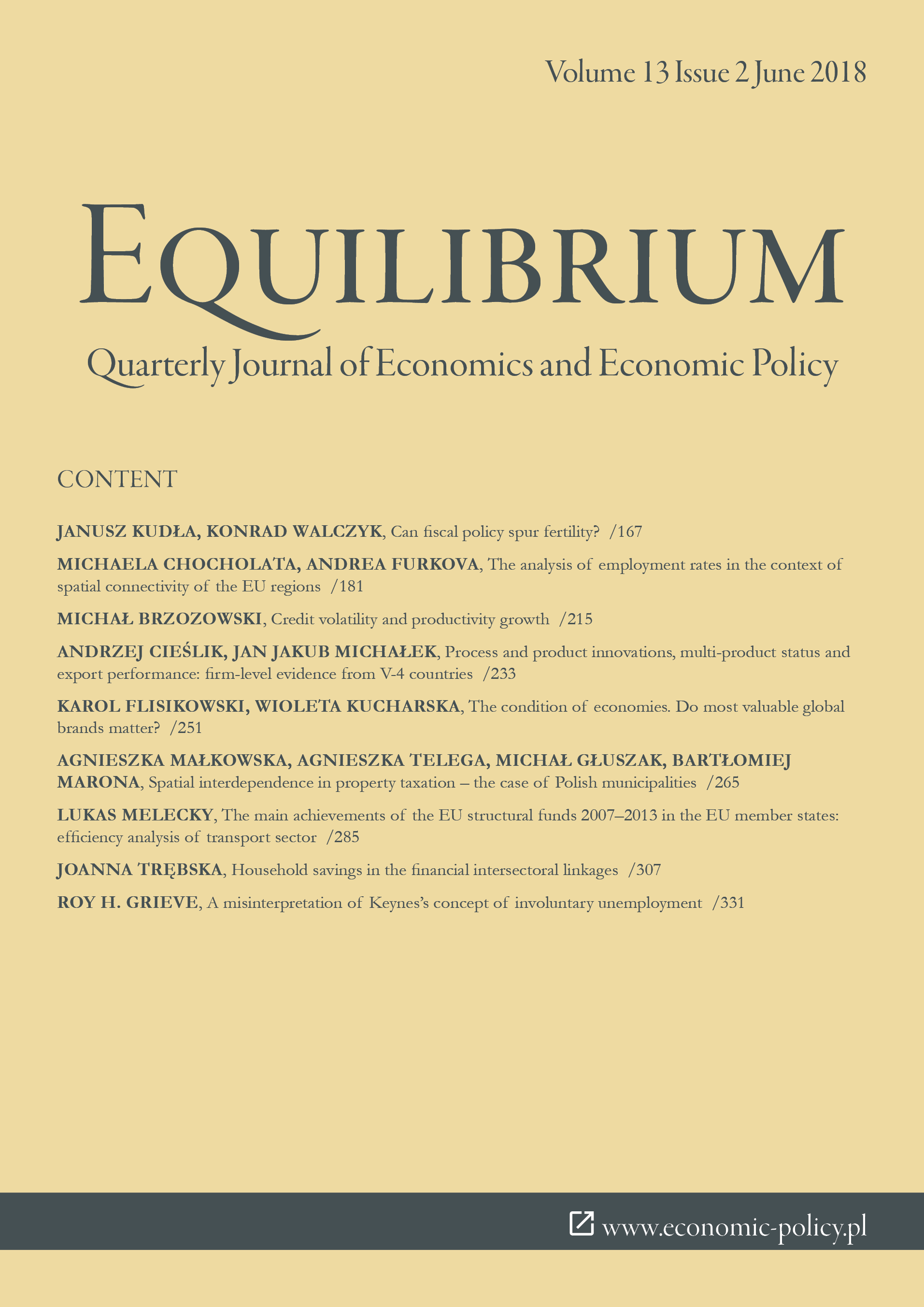The analysis of employment rates in the context of spatial connectivity of the EU regions
The analysis of employment rates in the context of spatial connectivity of the EU regions
Author(s): Michaela Chocholatá, Andrea FurkováSubject(s): Economy, Geography, Regional studies, Labor relations, Evaluation research
Published by: Instytut Badań Gospodarczych
Keywords: employment rate; exploratory spatial data analysis; EU NUTS 2 regions;
Summary/Abstract: The main objective of this paper is to analyse the employment rates in the context of spatial connectivity of the EU regions. Employment rate is declared as one of the important indicators of the strategic document Europe 2020. The achievement of high levels of employment in individual regions plays therefore an important role. Purpose of the article: The aim of the paper is to verify the possible spill-over effects within the EU regions and their territorial interconnection in the context of employment rates. Methods: Analysis is based on tools of the Exploratory Spatial Data Analysis (ESDA) to consider spatial connectivity of the EU regions. Findings & Value added: The results show that the statistically significant clusters of regions with high employment rates are situated mainly in the central, northern and northwestern part of the EU while the clusters with low values are located mainly in Greece, Spain, Italy, Portugal, Bulgaria, Romania and some French regions.
Journal: Equilibrium. Quarterly Journal of Economics and Economic Policy
- Issue Year: 13/2018
- Issue No: 2
- Page Range: 195-213
- Page Count: 19
- Language: English

